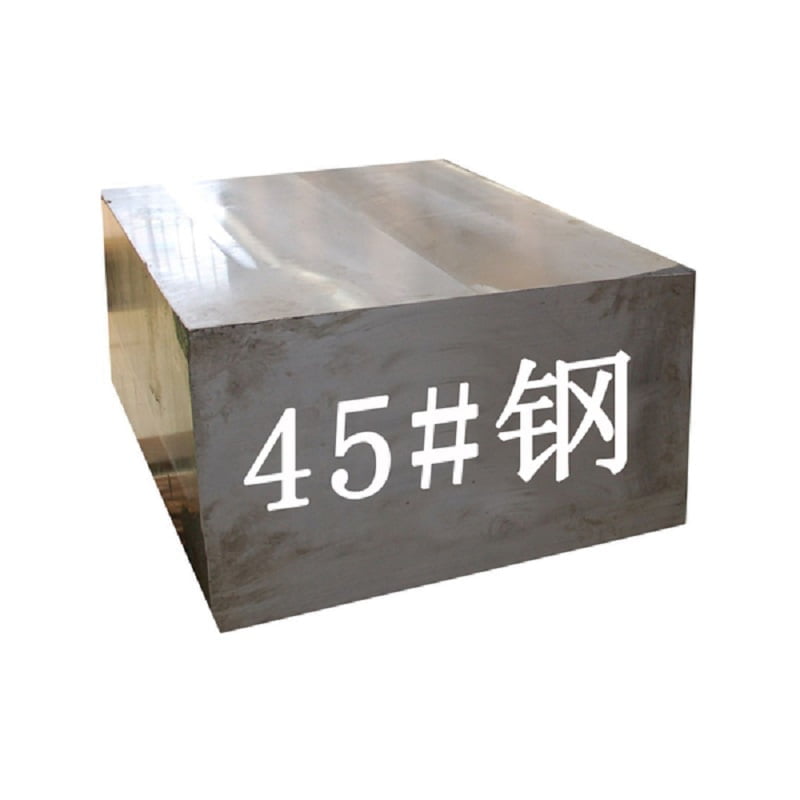
Introdução
S45C e S55C são classes populares de aço de médio carbono comumente usadas em diversas aplicações de engenharia e fabricação. Este artigo fornece uma comparação detalhada de S45C e S55C, utilizando tabelas para apresentar suas composições químicas, propriedades mecânicas, respostas ao tratamento térmico, aplicações e vantagens/desvantagens para melhor clareza e compreensão.
Composição química
A composição química de um tipo de aço é crucial na determinação de suas propriedades mecânicas e adequação para aplicações específicas.
| Elemento | Composição S45C (%) | Composição S55C (%) |
|---|---|---|
| Carbono (C) | 00,42% – 0,48% | 00,50% – 0,60% |
| Manganês (Mn) | 00,60% – 0,90% | 00,60% – 0,90% |
| Fósforo (P) | 00,03% no máximo | 00,03% no máximo |
| Enxofre (S) | 00,03% no máximo | 00,03% no máximo |
Explicação da composição química
- Carbono (C): A principal diferença é o teor de carbono. O S45C tem um teor de carbono de 0,42% – 0,48%, enquanto o S55C tem uma faixa ligeiramente superior de 0,50% – 0,60%. O maior teor de carbono no S55C aumenta sua dureza e resistência.
- Manganês (Mn): Ambas as classes contêm uma gama semelhante de manganês, que é importante para desoxidar o aço e melhorar a temperabilidade.
- Fósforo (P) e Enxofre (S): São consideradas impurezas no aço. Ambas as classes têm as mesmas porcentagens máximas permitidas, o que ajuda a reduzir a fragilidade.
Propriedades mecânicas
As propriedades mecânicas são críticas para determinar o desempenho de um material sob vários estressores.
| Propriedade | S45C | S55C |
|---|---|---|
| Força de rendimento (MPa) | Aproximadamente 355 MPa | Aproximadamente 400 MPa |
| Resistência à tração (MPa) | 570 – 700MPa | 650 – 800 MPa |
| Alongamento (%) | 14% (mínimo) | 12% (mínimo) |
| Dureza (HB) | 170 – 210 HB | 190 – 230 HB |
Explicação detalhada das propriedades mecânicas
- Força de rendimento: S55C tem um limite de escoamento maior que o S45C, o que significa que pode suportar maior tensão antes de se deformar.
- Resistência à tracção: A resistência à tração do S55C também excede a do S45C, tornando-o mais adequado para aplicações que envolvem suporte de carga significativo.
- Alongamento: O alongamento refere-se à capacidade do aço de esticar antes de quebrar. S45C apresenta maior alongamento, indicando que pode sofrer mais deformação plástica.
- Dureza: S55C é geralmente mais duro que S45C, contribuindo para sua melhor resistência ao desgaste.
Respostas ao tratamento térmico
O tratamento térmico pode influenciar muito as propriedades mecânicas dos aços carbono.
| Tipo de tratamento térmico | S45C | S55C |
|---|---|---|
| Extinção | Pode ser endurecido através de tratamento temperado | Pode alcançar maior dureza através da têmpera |
| Revenimento | Reduz a fragilidade enquanto mantém a resistência | Melhora a tenacidade, mantendo a dureza |
Explicação do tratamento térmico
- Extinção: Ambas as classes podem ser endurecidas por têmpera, mas o S55C, devido ao seu maior teor de carbono, tende a atingir uma maior dureza após a têmpera.
- Revenimento: Após a têmpera, um processo de revenido pode melhorar a tenacidade e reduzir a potencial fragilidade, o que é essencial para componentes que devem suportar cargas de impacto.
Formulários
S45C e S55C são usados em diversas aplicações com base em suas propriedades mecânicas.
| Inscrição | S45C | S55C |
|---|---|---|
| Engrenagens | Comumente usado | Adequado para engrenagens de alto estresse |
| Veios | Usado frequentemente | Usado em eixos de alto desempenho |
| Partes da máquina | Peças de engenharia geral | Componentes que exigem maior resistência |
| Ferramentas | Não é comumente usado | Aplicável para ferramentas de corte e matrizes |
| Componentes Automotivos | Usado frequentemente | Aplicações críticas (por exemplo, virabrequins) |
Explicação das aplicações
- S45C: Sua resistência e usinabilidade equilibradas o tornam adequado para aplicações gerais de engenharia, como engrenagens e eixos.
- S55C: O maior teor de carbono é adequado para aplicações que exigem maior resistência e dureza, como ferramentas de corte e componentes automotivos de alto desempenho.
Vantagens e desvantagens
Tanto o S45C quanto o S55C têm vantagens e desvantagens exclusivas.
| Aspecto | S45C | S55C |
|---|---|---|
| Vantagens | – Boa usinabilidade | – Maior resistência e dureza |
| – Econômico para aplicações gerais | – Excelente resistência ao desgaste | |
| – Propriedades equilibradas | – Adequado para ambientes de alto estresse | |
| Desvantagens | – Menor resistência em comparação com S55C | – Usinabilidade reduzida |
| – Dureza limitada | – Custo mais elevado em comparação com S45C |
Explicação detalhada das vantagens e desvantagens
- Vantagens do S45C: Sua boa usinabilidade e economia o tornam adequado para diversas aplicações gerais de engenharia.
- Desvantagens do S45C: A menor resistência e dureza podem limitar sua eficácia em aplicações de alto estresse.
- Vantagens do S55C: A maior resistência e resistência ao desgaste o tornam adequado para aplicações exigentes.
- Desvantagens do S55C: O aumento da dureza pode tornar a usinagem mais desafiadora, aumentando potencialmente os custos de produção.
Conclusão
A escolha entre S45C e S55C requer uma consideração cuidadosa dos requisitos específicos da aplicação. O S45C proporciona um equilíbrio entre resistência e usinabilidade, tornando-o adequado para uso geral em engenharia, enquanto a maior resistência e dureza do S55C o tornam ideal para aplicações que exigem melhor desempenho sob tensão e desgaste. Compreender as diferenças na composição química, propriedades mecânicas, respostas ao tratamento térmico e aplicações ajudará engenheiros e fabricantes a fazer seleções informadas de materiais adaptadas às necessidades de seus projetos.
